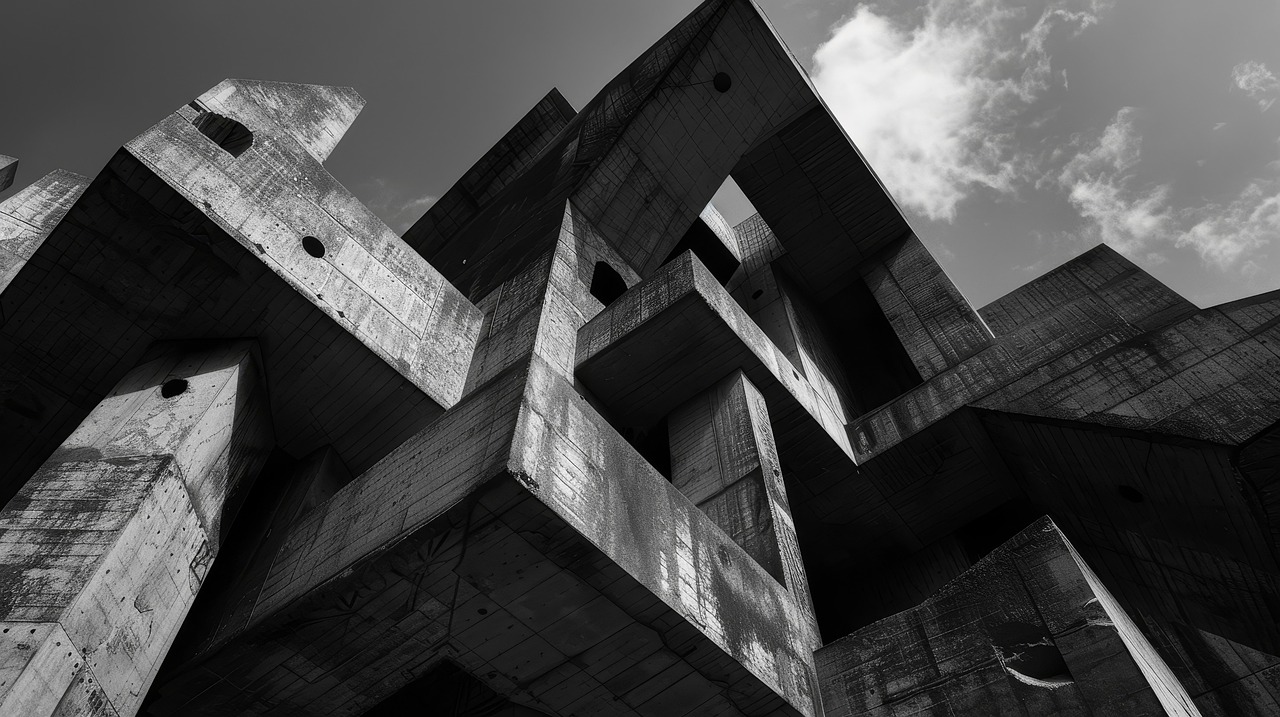The Authenticity Crisis: What Happened After the AI Gold Rush
For a long time, the main purpose of architectural visualization was to make things look as lifelike as possible. Clients wanted renders that looked just like photos. Software businesses pushed the limits of textures, reflections, and lighting until the difference between what they promised and what they built was almost gone. After that, AI came.
Generative AI tools made this level of visual polish available to everyone. Now, anyone can quickly make a perfect, lifelike picture of a building, whether it’s a sleek glass skyscraper or a farmhouse with wood siding. But as these perfectly polished, computer-generated images take over the design world, there emerges a serious issue of authenticity.
What good is that perfection if a machine can make a pristine, polished picture of a building that may never exist? Is our dependence on hyper-realistic rendering in our work hurting our dedication to real-world materiality and honest construction?

Brutalist shapes Minimal design background Source: freepik.com
The Counter-Trend: Minimal Brutalism is on the Rise
For more and more architects and designers, the answer is to defiantly go back to the real world. This trend is not just a request to bring back 20th-century Brutalism in a simplistic, dusty way. It is an evolution: Minimal Brutalism.
Minimal Brutalism is the philosophical opposite of the idea of algorithmic perfection. It combines the raw strength of original Brutalism with the clarity and restraint of Minimalism. The main idea is Honest Materiality. It is a deliberate rejection of the digital polish that AI makes so easy, and instead, it celebrates the “truth to materials.”
It is an architectural style that communicates, “I have nothing to hide.”
This is more than just a style; it’s a political and cultural statement that resonates especially with Gen Z, a generation that naturally doesn’t trust the polished, filtered, and corporate “aesthetic sameness” that AI can easily create. They value authenticity over gloss.
Minimal Brutalist Architecture Source: walking.blogspot
The Honest Materiality Manifesto
The word Brutalism comes from the French word béton brut, which means “raw concrete.” Minimal Brutalism takes this honesty beyond just concrete and applies it to every part of a building. In a future after AI, this way of thinking is the greatest way to avoid being seen as “fake” design.
The Four Pillars of Minimal Brutalism
Truth to Materials (Rawness): Use materials in their most natural, unprocessed state. This includes concrete that has been left bare so that the grain of the formwork (shuttering) can be seen, steel that has not been painted and has visible welding marks, or local wood that has not been polished. The material should tell the tale of how it was made.
- Exposed Structure: Structural parts are not disguised under ornamental veneer. The column is not a shell; it is a column. There is no ceiling hiding the beam; it is a beam. This is the same as displaying the code or the underlying HTML in digital design; it means being completely open.
- Utilitarian Focus (Clarity): Functionality must always come before decoration. The design is pared down to its most important purpose, so the material and shape may speak for itself.
- Intentional Imperfection: The little imperfections in construction, like a slight unevenness in the concrete pour or a small scratch on a steel plate, are not mistakes that need to be fixed. They show how people construct things with their hands and how the process works. This shortcoming is what makes the real structure different from the ideal, sterile AI render.
Brutalist raw design Source: freepik.com
From Hyper-Real Polish to Real Touch
The main problem with hyper-realistic representations is that they promote an unrealistic fantasy. They make concrete look like silk, hide any signs of weather and age, and show an unnaturally pristine material palette that is hard to keep up with in real life. This sets up an expectation gap for the client and a basic dishonesty in the design process.
Minimal Brutalism means that architects need to know how their materials work in real life, not just how they seem on a computer screen.
Digital Polish (AI Render) Perfect Finish
No visible connections, perfect colors, and sterile.
Edited, smooth surfaces
Minimal Brutalism (Honest Materiality)
Formwork that can be seen Grain Natural Weathering and Patina
Steel plates and bolts that are exposed Rough, tactile textures
The Raw Concrete Revival: A Case Study in Honesty
Think about how exposed concrete is coming back around the world. Architects that like Minimal Brutalism don’t use the smooth, perfect “concrete” texture that is common in digital renders. They use certain formwork processes, including rough-sawn wood, to make a surface that is very tactile and expressive. They use the concrete’s intrinsic differences in color and tone to make it a sculptural, time-based dynamic aesthetic that varies with age and light. This method isn’t chilly; it’s really tactile and emotionally based.

Triangle concrete glass interior AI generated
The Minimalist Blend and What Trust Will Be Like in the Future
Minimal Brutalism minimizes the heavy feeling that some of the original 1960s buildings had by using the ideas of Minimalism, such as clean lines, basic shapes, and a clutter-free space. It’s not only about being big; the new aesthetic is about being clear.
There is also no denying that sustainable design fits with philosophy. The design is naturally against short-lived, decorative trends that need to be replaced often since it focuses on strong, long-lasting materials like concrete, steel, and stone. A material that looks good in its natural form doesn’t need a poisonous finish or applied façade, which is better for the environment.
In the Post-AI world, the future of architecture won’t be about outdoing the machine at making the perfect picture. It will be about showing that the physical structure has a true worth that a machine can never copy. By adopting Honest Materiality, you not only establish a framework, but you also earn the trust of an audience that is suspicious and knows a lot about design. You choose to be completely flawed, and in a world full of digital fantasy, that’s the most powerful aesthetic choice you can make.
For more blogs like this CLICK HERE!!
Reference
AI-Powered Brutalism: Merging Nature with Synthetic Design – Architectural Story






